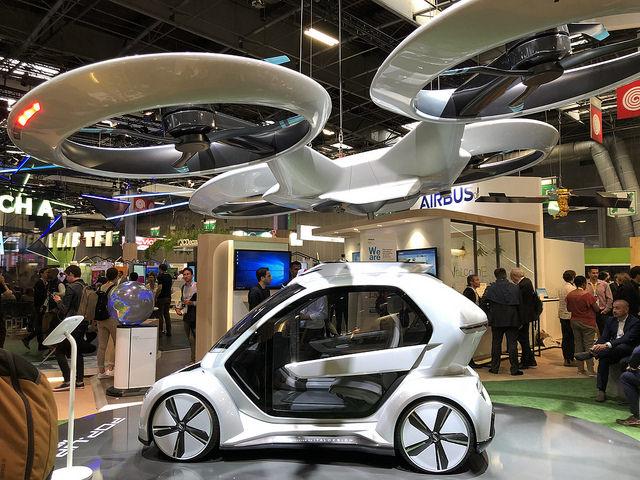
Since the time of the 1960’s cartoon family, The Jetsons, it seems the promise of flying cars has been just around the corner, but making this a reality has always proven elusive.
In fact the dream was set way before then going as far back as 1842, when according to The Economist, a British lace maker filed a patent for an “Aerial steam carriage” - an overly ambitious and of course unsuccessful innovation.
There have of course been several successful attempts at building flying cars in the past, matched with just as many commercial flops. Efforts to blend fixed wing aircraft with cars produced neither a great plane nor a practical car; on top of which, the need for runways proved a major impediment to their practicality. Hence the idea of flying cars has been a rich person’s hobby at best.
However, with burgeoning autonomous vehicle technology, and advances in electric-powered drone development, these days, there’s a lot of investment dollars going into passenger drones, and maybe “flying cars” really are just around the corner today.
Who owns this future seems to be up for grabs. At the moment passenger drones are developmental projects by companies spanning established industries such as aerospace, automobile and technology sectors - Airbus, Toyota, Google and Uber are all household names involved in trying to carve out a piece of the action in this space. Quite possibly, partnerships across these established industry sectors may win the day.
For example, Audi and Airbus demonstrated a joint robo-taxi service (called Pop.Up Next) this month at Drone Week in Amsterdam. Forbes reported the project combines an aerial drone and a modular electric car, whereby a detachable passenger pod can be transported by drone autonomously to a certain location and deposited upon an electric car chassis, for the “last mile” transportation. Transportation journalist Liane Yvkoff says Audi has been testing the system using a 1:4 scale model in South America, and demonstrated this month that the drone could successfully deposit the passenger pod onto the electric car. Audi says it is convinced flying taxis are on their way.
This is one of many passenger drone concepts. The technology underpinning them all, however, is ever improving battery technology which can now provide sufficient energy density to power the electric rotors. This in turn permits vertical take-off and landing (or VTOL), and enables enough flying time to make passenger drones a useful form of transport. There are a number of working prototypes today which offer proof of concept.
As such, the technological pieces already more or less fit together to make passenger drones a likely part of our transportation future. Additionally the social driver that has so many big companies excited is that since more people live in ever increasingly dense urban environments, drones will be necessary to alleviate the existential and worsening gridlock faced by ground transportation options.
But do the economics of passenger drones make sense, and importantly, is there a business case?
In March this year, the investment company ARK Invest - an organization which focuses on large scale investment opportunities resulting from technological innovations - published research on what they call “air taxis” or eVTOLs, and they believe autonomous passenger drones are absolutely in our future.
Looking at a scenario of getting from Midtown Manhattan to JFK airport, ARK Invest’s analysis suggests that the journey would take just 18 minutes by drone - a quarter of the time a traditional taxi journey would take - and would cost about 74 dollars, which they say is a small premium over a typical 65 dollar taxi ride.
This sounds surprisingly cost effective, but ARK Invest details costs are controlled by various factors such as the likely low maintenance costs of electric motors, limited need for special infrastructure, low energy costs (compared with fossil fuel), and wage savings since these vehicles would be pilotless. They are sufficiently bullish to think air taxi services could be commercially available in around 5 years.
There are of course still significant obstacles still to overcome. Earlier this year, The Economist pointed out “sense and avoid” equipment required to prevent airborne collisions does not yet exist, though they say such systems are under development by NASA and other organizations.
On top of that, TechCrunch identifies that developing comprehensive regulations will likely be an impediment too, citing that in the United States, the FAA has been slow to address the drone industries’ call for them. Perhaps it's not surprising regulatory issues are not yet resolved; after all, the regulatory conundrum is far from resolved for autonomous cars too, so imagine regulating vehicles that move in a third dimension.
Imagine too, the potential social resistance in the adoption of this technology. Will people trust the technology to get on board a pilotless flying drone? It’s one thing if an autonomous car develops a technical problem; it can be programmed to pull over, but what is the escape plan with a pilotless drone that runs into difficulties?
No doubt technological and regulatory issues will be sorted out, and all innovations have their early adopters. But another interesting question remains - are passenger drones a particularly environmentally sustainable way of solving the mass movement of people in dense urban areas?
ARK Invest calculates that a Tesla Model S operates at 0.27 kWh per mile, whereas an air taxi will likely use 1.16 kWh per mile - more than four times as much energy. In fact the air taxi is closer in energy use to Tesla’s forthcoming semi truck - which will use 1.55 kWh per mile - than it is to Tesla’s passenger EV.
For further perspective however, according to UC-San Diego research, the equivalent energy cost of a moving a 12 mpg Hummer is 3.05 kWh per mile - so the air taxi beats the Hummer easily (though that’s arguably a low bar) but it doesn’t hold a candle to a 50 mpg Prius which uses the equivalent energy of 0.73 kWh per mile. In conclusion, air taxis are within a reasonable range of energy use.
But it would be hard to advocate passenger drones on the basis of energy use as the most sustainable way of moving the masses around dense urban environments. Electric scooters would do a much better job of alleviating urban congestion at a mere fraction of the energy cost. However, as a substitute for getting a traditional taxi to the airport, or an option for children or the elderly who can’t otherwise get themselves around, the technology would no doubt have its place. Certainly, plenty of big transportation, aerospace and tech companies are making a bet on it.
Image credit: Pierre Lannes/Flickr

Phil Covington holds an MBA in Sustainable Management from Presidio Graduate School. In the past, he spent 16 years in the freight transportation and logistics industry. Today, Phil's writing focuses on transportation, forestry, technology and matters of sustainability in business.














